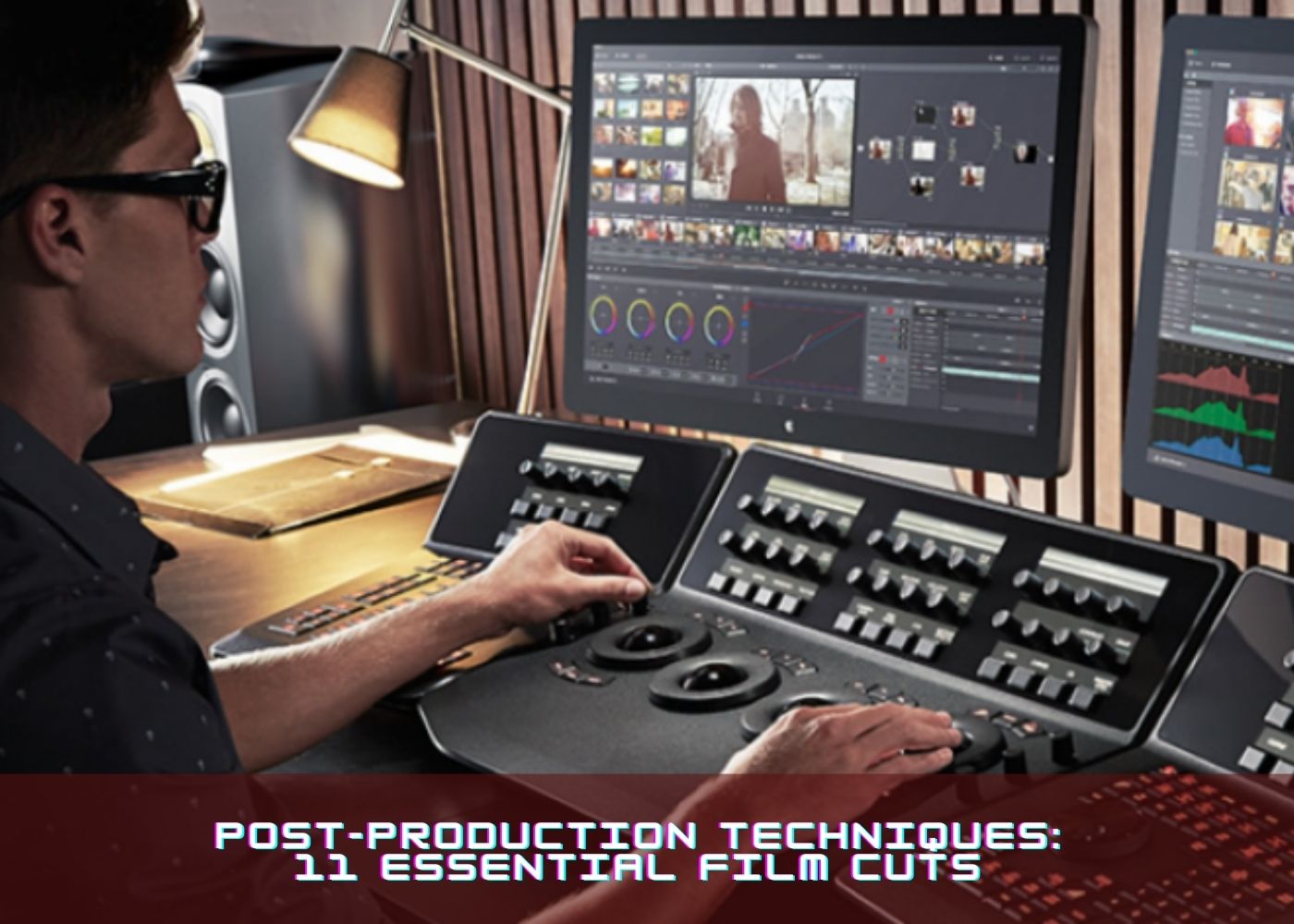After you've shot all of the raw footage for a short or
feature film, you can start putting it together in the editing studio to create
a cohesive cinematic experience. The editing stage of the post-production process is critical. The process of
editing film and video can be time-consuming and intricate, including several
rounds of shaping and refining to achieve the director's vision.
11 Different Cuts in Video Post-Production
To compile television show or film footage, film editors
employ a variety of cuts and editing techniques, including:
1. The hard cut, also known as the standard cut
Is an editing technique that cuts from one clip to the next
without using a transition, resulting in clean edits. Because utilizing a hard
cut to transition between scenes can be visually unpleasant for the audience,
most hard cuts are contained within a scene.
2. Cut to the chase
A jump cut is an editing method in which two consecutive
shots are chopped between. The camera location in these photos does not vary
(or varies only slightly), but the subjects do, giving the impression that they
are hopping about the frame. The effect of jumping forward in time is achieved
by using jump cuts.
3. A match cut
Is an editing transition in which visual components at the
end of one scene are visually or aurally matched with elements at the start of
the next scene.
4. Split edits
Are editing techniques in which the video and audio
transition at distinct periods. In a split edit, the audio from the following
scene comes before the video or the other way around. Split edits are used by
editors to combine conversational dialogue segments with response shots.
5. J-cut
A J-cut is a split edit variation in which the video from a
scene transitions before the audio that corresponds to it.
6. L-cut
An L-cut is a split edit variation in which the audio from a
particular scene transition before the video that corresponds to it.
7. Cut-ins
Cut-ins highlight a specific section of a scene by providing
a close-up or detailed perspective of a single point of emphasis. Cut-ins can
add to the fluidity and continuity of a scene while also enhancing the
atmosphere or comprehension of a moment.
8. Montage
This is an editing technique that combines a succession of
brief images or clips into a single sequence, which is frequently set to music.
Montage sequences are a way of presenting a lot of information to the audience
at once, and they often imply the passage of time or numerous simultaneous
events.
9. Cross-cut
Also known as parallel editing, this editing technique
alternates between the action in two concurrent scenes as it unfolds.
Cross-cutting is a technique used by editors to make it appear as if numerous
scenes are taking place at the same time.
10. A cutaway shot
Inserts another scene into a continuous cut, occasionally
going back to the previous scene. Cutaways allow the audience to observe what's
going on outside of the present action, providing a different perspective or
background, or providing a laugh.
11. Cut slash
Is a quick transition from one scene to the next. Smash cuts
happen out of nowhere, sometimes even interrupting a character's speech in the
middle of a phrase. A smash cut is ideal for contrasting the tone of two
scenes, concluding a sequence with suspense, or establishing comic irony.
Editing is one of the most misunderstood aspects of
filmmaking by outsiders and amateurs alike. Many people believe that editing
consists solely of deleting undesirable clips and shortening them. That may be
accurate on the surface, but we get closer to the art of editing when we turn
those assumptions into questions. What does it mean to have a poor day? How
much should I reduce the length of that clip? These fundamental questions, and
the answers to them, will have an impact on how people consume information.
Whether you're using Premiere Pro, Final Cut Pro X, Resolve,
or Avid to edit, there is a slew of crucial decisions to make that will either
help or hurt your story.







